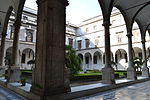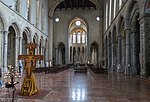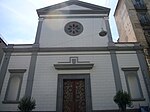Palazzo Marigliano, Naples
Palaces in NaplesRenaissance architecture in Naples
The Palazzo Marigliano, also known as Palazzo di Capua is a Renaissance-style palace in Central Naples, Italy. It is located on the Via San Biagio dei Librai number 39.
Excerpt from the Wikipedia article Palazzo Marigliano, Naples (License: CC BY-SA 3.0, Authors).Palazzo Marigliano, Naples
Via San Biagio dei Librai, Naples Pendino
Geographical coordinates (GPS) Address External links Nearby Places Show on map
Geographical coordinates (GPS)
| Latitude | Longitude |
|---|---|
| N 40.849635 ° | E 14.258846 ° |
Address
Palazzo Marigliano (Palazzo di Capua)
Via San Biagio dei Librai
80138 Naples, Pendino
Campania, Italy
Open on Google Maps











